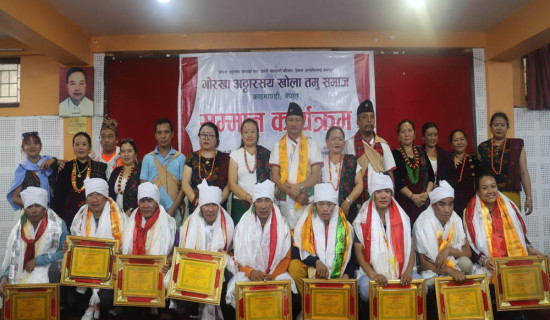- Tuesday, 17 June 2025
Teramocs: A Two-Faced Mystery
Anupam Bhattarai
In the ever-changing world of telecommunications, fraud prevention and flawless connection depend heavily on effective traffic management and control. Ensuring the security and integrity of telecommunications networks is crucial in an era where digital communication predominates. With the deployment of the Telecommunications Traffic Monitoring and Fraud Control System, (Teramocs), Nepal gets going in this endeavor. This state-of-the-art technology opens up a Pandora's Box of insights and control mechanisms that might completely transform the nation's telecoms sector. Teramocs is a cutting-edge system for tracking, evaluating, and managing network traffic. Because the system runs in real-time, any suspect or illegal activity may be quickly detected and dealt with. Its main goals are to maximise the effectiveness of communications services, prevent fraud, and maintain the integrity of the network.
Teramocs tracks telecommunications traffic in real-time using sophisticated algorithms and monitoring technologies, which enables authorities to quickly identify suspicious activity and abnormalities. Teramocs can detect possible fraud cases, including SIM box fraud, foreign income fraud, and subscription fraud, by examining trends and abnormalities in call traffic. Authorities are able to respond quickly to stop financial losses and preserve the integrity of the telecom network thanks to this proactive strategy. It processes enormous volumes of telecom data while maintaining the privacy and security of sensitive information by using secure data analytics techniques.
Teramocs produces reports and warnings that may be customised according to pre-established criteria. This allows regulatory agencies and telecom companies to keep an eye on critical performance metrics and react quickly to any new risks or anomalies. It functions as a cooperative platform that enables the exchange of information and synchronisation between law enforcement, regulatory bodies, and telecom companies. Telecom operators can more efficiently allocate their resources when they use Teramocs. Improved service quality is the outcome of the system's ability to prioritise network traffic, identify any bottlenecks, and allocate resources efficiently. Teramocs presents a paradox as well as a solution, offering obstacles that must be carefully considered while also revealing the secrets of fraud control.
The telecom industry in Nepal can benefit greatly from its deployment. Teramocs has increased customer trust in telecommunications services by strengthening security protocols and reducing fraudulent activity. Additionally, Teramocs' proactive strategy has protected regulatory agencies' and telecom companies' profits, bolstering the nation's general economic stability. Critics argue that concepts like criminality, national interest, and sovereignty are defined broadly and at the discretion of government authorities. The government has produced the Bill to Amend and Unify the Laws Related to Telecommunications, 2079 in order to fully adopt Teramocs technology. In the event that the Parliament passes this Bill in its current form, people's rights to privacy and freedom will be violated. The administration pushed to use the NTA to deploy this technology, which prevented the Bill from moving ahead. 'By having direct access to the service provider's system, it will be feasible to record the talks of the necessary individuals and install a mechanism utilising appropriate technology,' reads section 77 of the Bill.
Teramocs also presents a paradoxical challenge – a complexity resulting from the intricate structure of telecommunications security. The very characteristics of Teramocs that make it an effective deterrent to fraud also add to the complexity of running and maintaining such an advanced system. By offering automatic warnings, fraud detection, and real-time surveillance, Teramocs strengthens security measures. This feature is consistent with the promise of improved security, since it gives authorities the ability to anticipate attacks and take preventative action. A complex web of requirements that need ongoing attention and resources is created by the requirement for updates, adaptable responses to new threats, and coordination among stakeholders.
In Nepal, Teramocs represents a contradiction, serving as a source of complexity as well as a potentially useful remedy for telecom security. In order to overcome this paradox, stakeholders must take a calculated and cooperative approach, proactively addressing obstacles and fully using Teramocs. Nepal must recognise its dual nature as it follows the route of telecom security in order to make sure that the Pandora's Box it unlocks continues to be a force for good in the nation's digital environment.
















